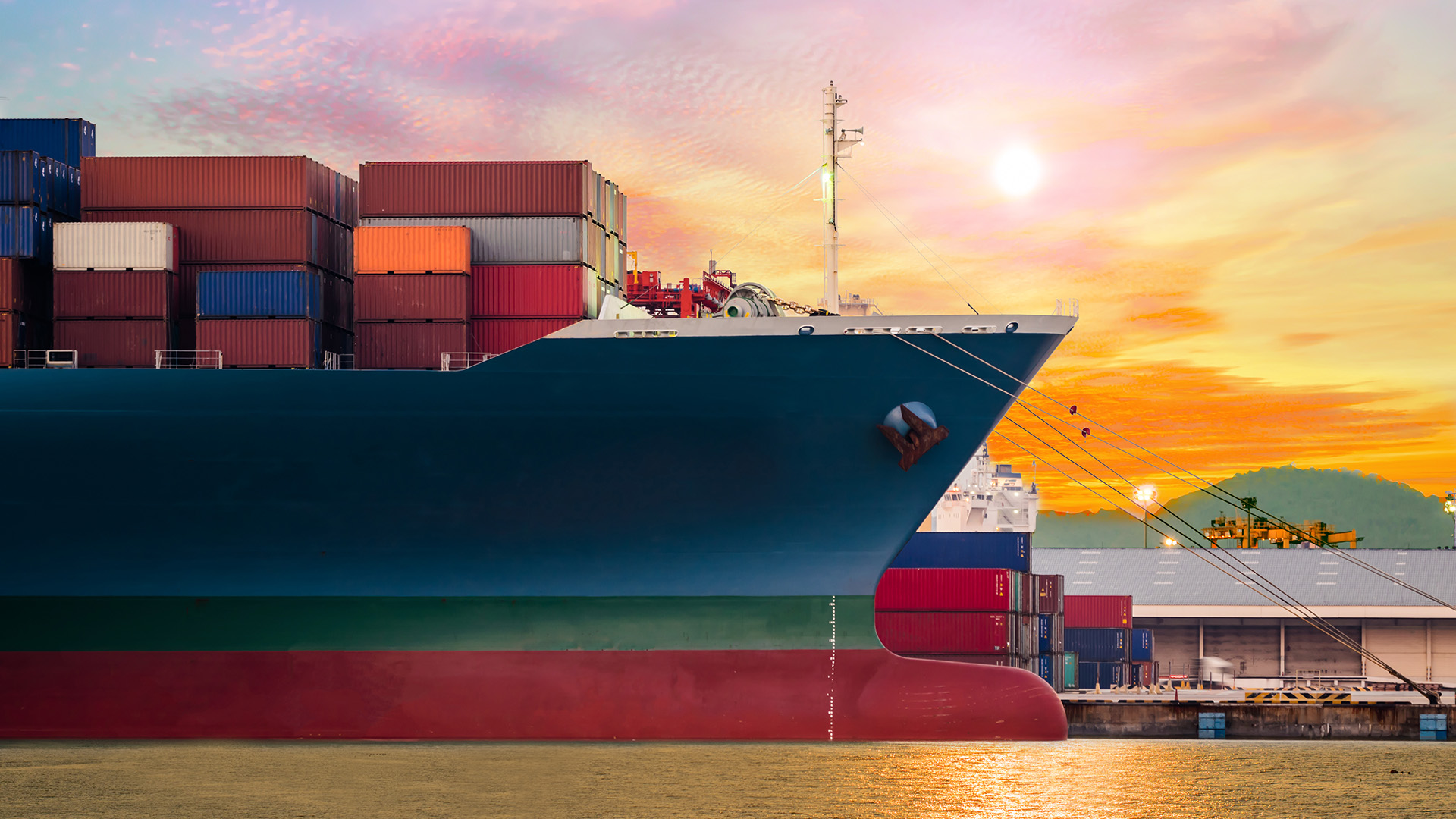Fuel consumption isn’t static, it changes with every mile, maneuver, and moment at anchor. For maritime professionals, understanding key fuel performance indicators across operating conditions is vital to boost efficiency and meet stricter regulations.
This article shows you which fuel KPIs matter most during different voyage phases and how comparing them in context helps optimize operations, reduce emissions, and make smarter decisions onboard.
What fuel KPIs matter most across different operating conditions onboard?
Choosing the right fuel Key Performance Indicators (KPIs) is essential in the maritime shipping industry. These metrics have a direct impact on vessel efficiency, cost control, and sustainable operations.
1. Energy consumption per ton-mile:
This tells you how much fuel is used to move cargo over a given distance. During sea passage, this KPI becomes especially significant, as steady sailing conditions reveal engine health and hull performance.
2. Fuel efficiency:
Track this to evaluate how effectively fuel converts into vessel movement. When maneuvering in port, changes in speed or direction can cause sharp variations, making it critical to monitor hourly or event-based shifts.
3. Emissions:
Carbon emissions from main engines and auxiliary generators are under growing scrutiny. During operations in Emission Control Areas (ECAs) or when slow steaming, knowing your emissions profile helps ensure compliance and supports the Environmental, Social, and Governance (ESG) targets central to industry sustainability.
4. Auxiliary power usage:
Energy drawn by support systems, like pumps, lighting, or air conditioning, increases notably during port stay or anchorage. Monitoring auxiliary systems reveals opportunities for savings that often go unnoticed.
5. Voyage profile alignment:
Matching actual operation to planned voyage profiles is key. Deviations in fuel use often trace back to unexpected environmental conditions, inefficient routing, or extended waits at anchor. Comparing current fuel use to benchmarks from previous sea-trials or design data, as enabled by Danelec Onboard Insights, helps crews spot and solve these deviations instantly.
Which fuel KPIs change most noticeably with different operating conditions onboard?
- At sea, main engine performance and fuel efficiency are the prime movers.
- In port, auxiliary power usage and emissions from generators become more prominent.
- During maneuvering, there are quick spikes in energy consumption per ton-mile due to constant speed changes.
- At anchorage, care should be paid to auxiliary systems, as these can quietly increase overall energy use.
How can shipping professionals prioritize relevant KPIs for each voyage phase?
Prioritize KPIs by phase:
- Sea Passage: Main engine fuel efficiency, energy consumption per ton-mile, and route adherence.
- Port Stay: Auxiliary power usage and emissions from generators.
- Maneuvering: Real-time fuel flow and efficiency deviations.
- Anchorage: Auxiliary system consumption and brief energy surges.
By focusing on phase-relevant KPIs and leveraging digital dashboards that provide high-frequency operational data, such as Danelec’s Crew Display Unit, crews maintain clear situational awareness and act on deviations without delay.
Why does comparing KPIs by operating condition improve vessel efficiency and compliance?
Analyzing KPIs by specific voyage profile reveals hidden trends and inefficiencies that broad averages often mask. This approach empowers maritime professionals to:
- Reduce excess fuel consumption and emissions by targeting the root cause for each phase.
- Meet regulatory standards like EEXI and MARPOL by proving compliance across all operational contexts.
- Drive proactive performance management with built-in performance diagnostics, eliminating reliance on shore-based analysis.
Automated reporting and baseline comparisons, as delivered by Danelec Onboard Insights, help ships save over 100 hours annually per vessel while refining their operational benchmarking, supporting both crew and shore teams in making smarter, data-backed decisions.
How do digital tools enable real-time KPI tracking and comparison onboard?
Real-time KPI tracking is now central to the maritime shipping industry. Digital tools simplify fuel monitoring, empower operational benchmarking, and help vessel teams maintain compliance even as regulatory standards tighten.
When digital dashboards, onboard sensors, and automated reporting come together, clarity and control replace guesswork.
Automated systems: Collection and processing of KPI data during different operating conditions
Modern vessels rely on onboard sensors to feed high-frequency operational data from main engines, auxiliary systems, and fuel meters directly into digital platforms. This automated data flow makes it easy to collect reliable energy consumption and vessel efficiency data, regardless of whether the ship is at sea, maneuvering in port, or performing maintenance.
For example, Danelec Onboard Insights collects and processes fuel and engine data continuously. This removes the need for manual entries, ensuring that operational benchmarking against design or sea trial standards is always current. Teams can quickly spot where efficiency drops, or energy consumption spikes, and act immediately.
The impact of real-time data visualization in comparing fuel KPIs onboard
Data visualization turns raw numbers into fast, clear insights. Integrated digital dashboards display live fuel use, power draw, and trend deviations for any given operating condition, slow steaming, heavy-weather routing, or port ops, in a way that crew and superintendents can understand at a glance.
Rather than sifting through spreadsheets, performance analytics appear in real time on the bridge or in the engine room. This lets crew compare operational performance and make fuel-saving decisions instantly, without waiting for shore teams.
How automation reduces manual workload and boosts reporting accuracy
Automated reporting is a game changer for maritime teams. Instead of spending hours entering data and preparing compliance documents, crew now receive detailed, accurate reports generated directly from the vessel’s live systems.
With solutions like the Crew Display Unit in Danelec Onboard Insights, ships save over 100 hours per year on manual noon-to-noon and voyage reports. This not only frees up valuable time, it also boosts reporting accuracy and reduces risk of noncompliance.
Automated compliance monitoring, such as tracking for ShaPoLi power reserve breaches, means no more missed regulatory alerts. Crews stay ahead, emissions calculations are precise, and every KPI is available for immediate comparison across a fleet or single vessel.
Real-world impact: Maritime shipping companies can now compare and benchmark fuel KPIs across all operating conditions, streamline emission compliance, and make smarter decisions, right onboard, in real time. The complexity is removed, and insights are always actionable.
How can actionable KPI comparisons drive operational improvement and compliance?
In the maritime shipping industry, using actionable KPI comparisons is the most effective way to unlock operational excellence, stay ahead of regulatory standards, and deliver on energy efficiency and sustainability goals.
When crews use high-frequency operational data to compare KPIs by voyage phase, sea state, or load condition, they create a foundation for performance optimization that can be acted on immediately, right from the engine room or the bridge.
Benchmarking KPIs Against Baselines: Revealing Improvement Opportunities
Operational benchmarking starts with clear reference points. By measuring actual energy consumption, fuel monitoring results, and vessel efficiency against sea-trial or original design baselines, crews quickly see where daily routines fall short or where gains have been realized.
This approach allows maritime professionals to:
- Detect increases in energy usage under specific operating conditions
- Flag departures from optimal speed, trim, or engine performance
- Quantify improvements and set evidence-backed goals for further savings
With onboard digital dashboards like Danelec Onboard Insights, deviations are highlighted in real time. This transparency empowers crews to adapt on the spot, making proactive decisions long before inefficiencies become costly.
Supporting Sustainability and Commercial Success with KPI Comparison
Comparing performance KPIs per operating condition unlocks opportunities for ongoing performance optimization and supports sustainability goals. By tracking trends over time and linking them to specific actions onboard, companies:
- Reduce excess fuel consumption and minimize emissions
- Align everyday decisions with carbon intensity targets and commercial commitments
- Demonstrate measurable progress to cargo owners and charterers who value transparent, sustainable shipping
With the ability to benchmark and share results, maritime professionals build trust, secure commercial advantage, and shape a culture of continuous, insight-driven improvement.
By integrating automated performance diagnostics and operational benchmarking into everyday processes, crews and managers gain the clarity and confidence to make decisions that drive real-world impact, today and well into the future.
Conclusion
Looking back on the key points, it’s clear that comparing fuel KPIs across different operating conditions onboard is essential to truly unlocking vessel efficiency and compliance. By understanding how energy consumption, fuel efficiency, emissions, and auxiliary power usage fluctuate between sea passage, port stay, and maneuvering, we gain a clearer picture of performance that goes beyond simple averages.
Digital tools like real-time monitoring, onboard sensors, and automated reporting transform this data into intuitive insights, removing guesswork and enabling shipowners and operators to act promptly. This not only streamlines reporting but also sharpens operational benchmarking against regulatory standards and sustainability goals.
The value lies in shifting from reactive fixes toward proactive, predictive management where each phase of the voyage informs smarter choices. This makes a tangible difference, not just in lowering fuel costs, but in reducing environmental impact and gearing fleets for future challenges.
As the maritime industry evolves, I find myself asking: how can we deepen these insights further to strengthen both commercial success and lasting sustainability? The answers are out there in the data, ready to guide us toward cleaner, more efficient seas.




